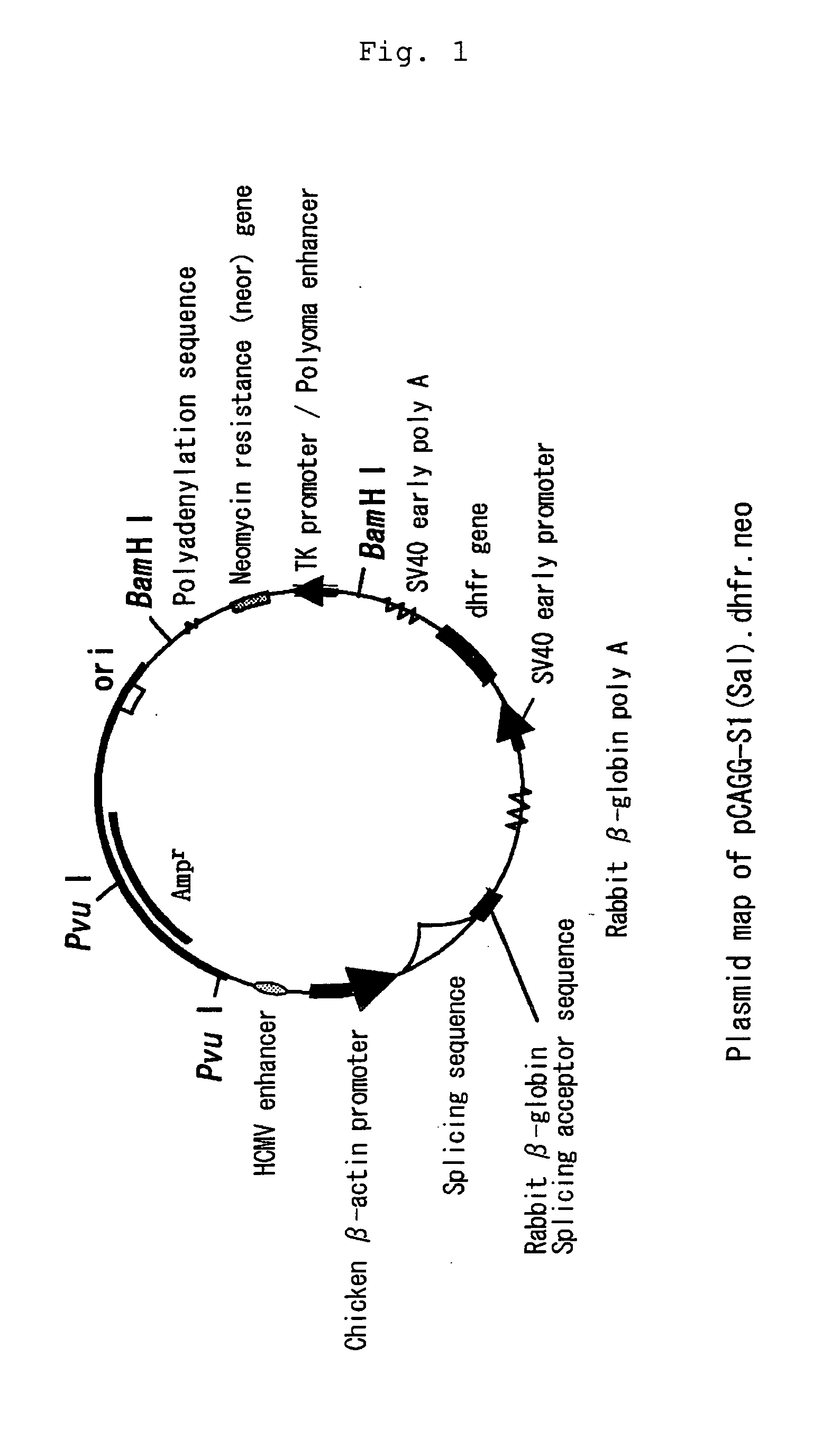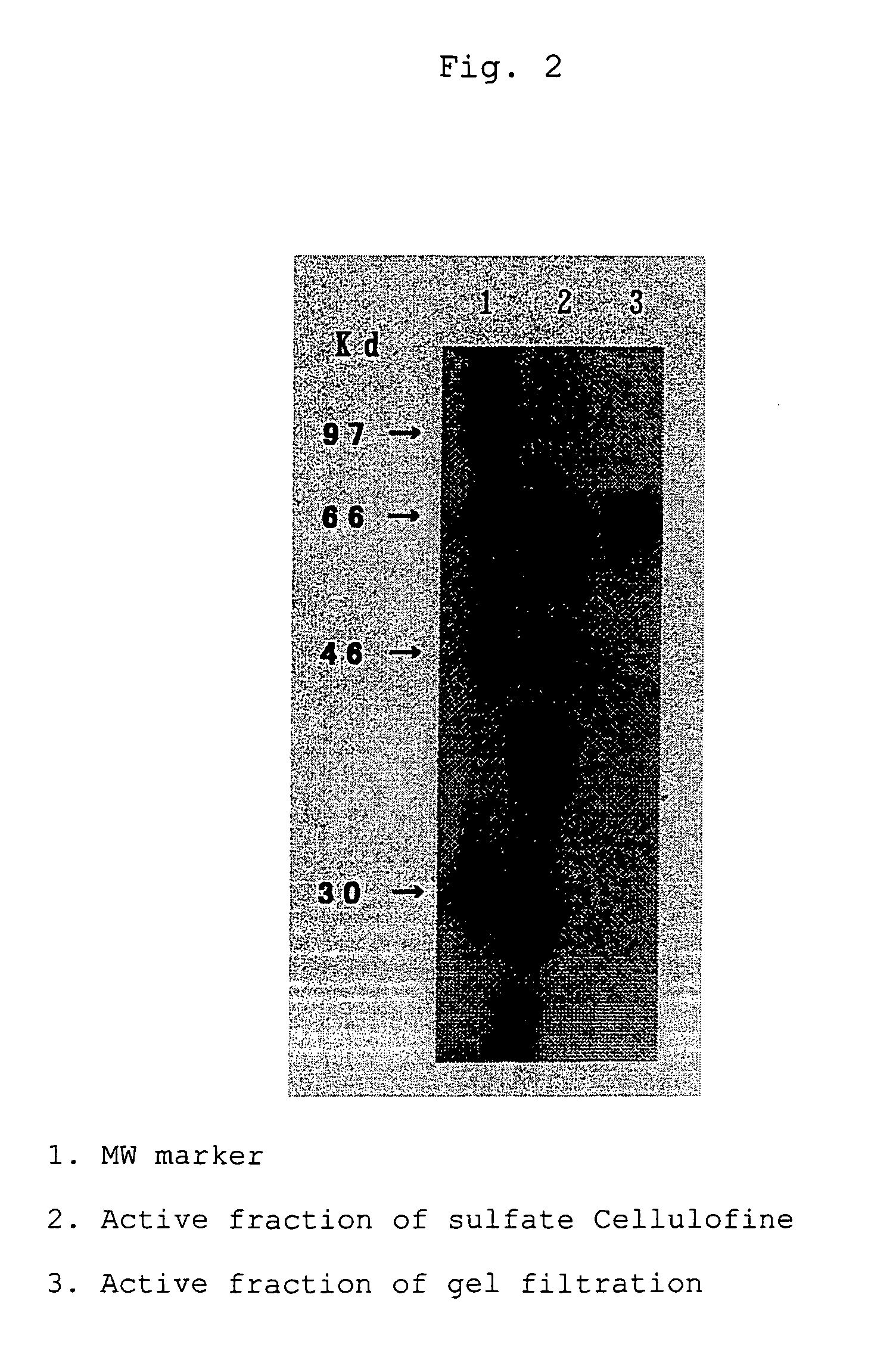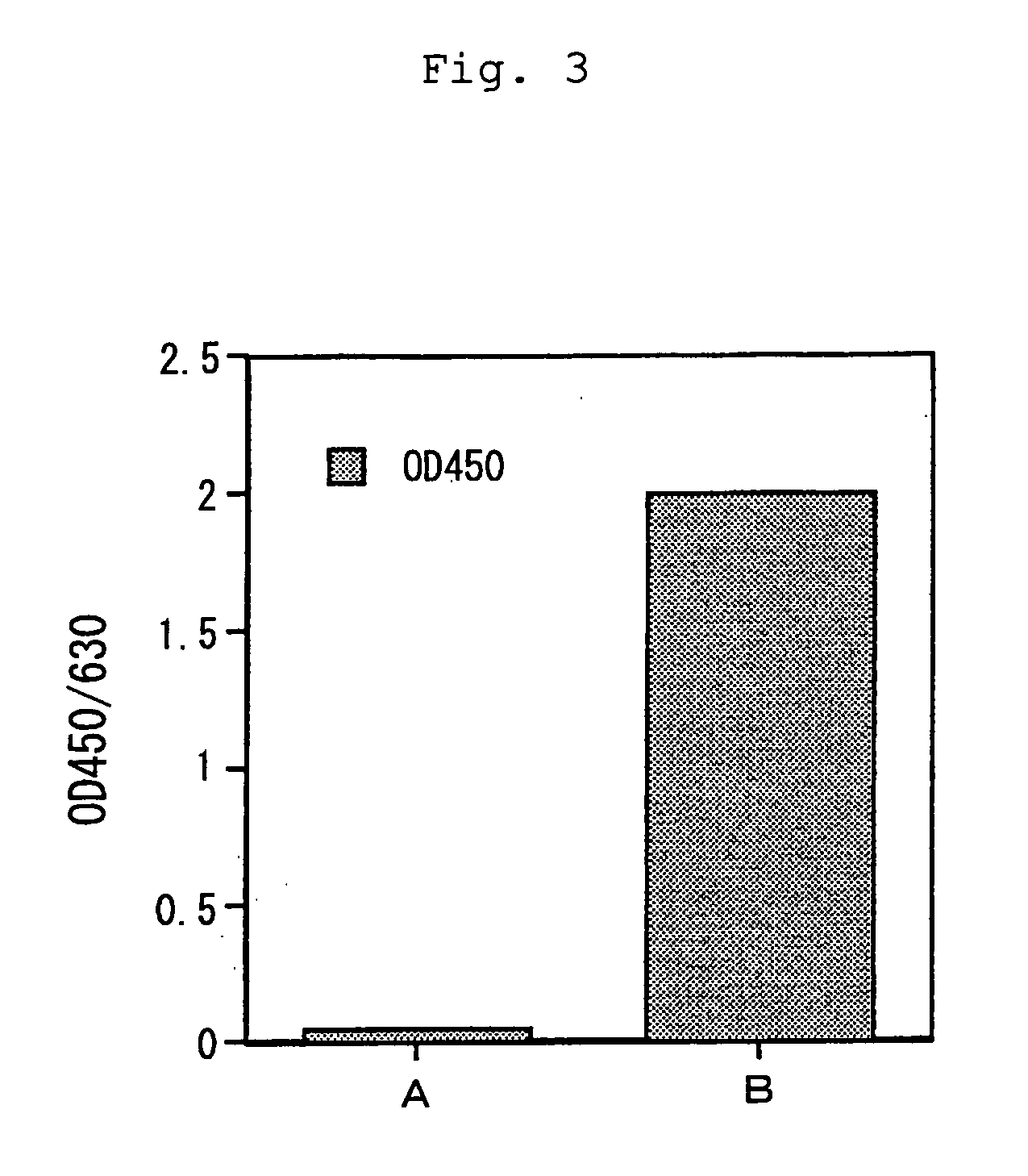Genetically modified ecarin and process for producing the same
a technology of echis carinatus and ecarin, applied in the field of new polypeptides, can solve the problems of not being able to use ecarin for activating prethrombin-2 or for preparing meizothrombin on an industrially applicable large scale, and not being able to guarantee the stability of wild echis carinatus /i>, and achieve the effect of efficient preparation of ecarin
- Summary
- Abstract
- Description
- Claims
- Application Information
AI Technical Summary
Benefits of technology
Problems solved by technology
Method used
Image
Examples
example 1
(Construction of Expression Plasmid)
(1) Construction of Expression Plasmid pCAGG-S1(Sal)
[0026] A chicken β-actin promoter-based expression plasmid pCAGG (Japanese Patent Publication No. 168087 / 1991) was digested with restriction enzyme EcoRI, blunt ended with T4 DNA polymerase, and then ligated with T4 DNA ligase in the presence of phosphorylated XhoI linker to construct pCAGG(Xho). The obtained pCAGG(Xho) was digested with restriction enzyme SalI, blunt ended with T4 DNA polymerase, and then ligated with T4 DNA ligase to construct pCAGG-Pv2. The resulting pCAGG-Pv2 was digested with restriction enzyme XhoI and then treated with S1 nuclease to erase several nucleotides in the vicinity of the XhoI recognition site. After the nuclease treatment, a single chain region was modified with T4 DNA polymerase in the presence of dNTPs and then ligated with T4 DNA ligase in the presence of phosphorylated SalI linker to construct pCAGG-S1(Sal).
(2) Construction of Expression Plasmid pCAGG-...
example 2
(Preparation of cDNA of Snake Venom Ecarin)
[0029] Using the nucleotide sequence of ecarin cDNA reported in the literature (S. Nishida et al., Biochemistry, 34, p. 1771-1778, 1995) as a template, PCR was conducted using a synthetic DNA having the sequence:
ATGCACTCGAGATGATCCAGATTCTCTTGGT(SEQ ID NO: 3)
[0030] and a synthetic DNA having the sequence:
TGCATCTCGAGTTAGTAGGCTGTATTCACA(SEQ ID NO: 4)
as a primer pair to introduce the recognition sites of restriction enzyme XhoI at both termini. The obtained gene was digested with restriction enzyme XhoI and subcloned into pUC18 to construct pUC.EC. A nucleotide sequence of the ecarin cDNA region of the resulting plasmid was determined by the conventional method to thereby obtain ecarin cDNA that has an exactly identical nucleotide sequence from the initiation codon to the termination codon to the sequence reported in the literature (SEQ ID NO: 2).
[0031] The ecarin cDNA obtained herein encodes the polypeptide as set forth in SEQ ID NO: 1....
example 3
(Construction of Ecarin Expression Plasmid)
[0032] The ecarin cDNA obtained in Example 2 was incorporated into the expression vector pCAGG-S1(Sal).dhfr.neo obtained in Example 1. The plasmid pCAGG-S1(Sal).dhfr.neo was digested with restriction enzyme SalI and then dephosphorylated with bovine small intestine derived alkaline phosphatase. The plasmid pUC.EC obtained above was digested with restriction enzyme XhoI and then a fragment of about 1.8 kbp encoding ecarin cDNA was purified by agarose gel electrophoresis. Then, the dephosphorylated plasmid and the fragment encoding ecarin cDNA were ligated to cyclize with T4 DNA ligase to construct pCAGG-S1.EC.dhfr.neo.
PUM
 Login to View More
Login to View More Abstract
Description
Claims
Application Information
 Login to View More
Login to View More - R&D
- Intellectual Property
- Life Sciences
- Materials
- Tech Scout
- Unparalleled Data Quality
- Higher Quality Content
- 60% Fewer Hallucinations
Browse by: Latest US Patents, China's latest patents, Technical Efficacy Thesaurus, Application Domain, Technology Topic, Popular Technical Reports.
© 2025 PatSnap. All rights reserved.Legal|Privacy policy|Modern Slavery Act Transparency Statement|Sitemap|About US| Contact US: help@patsnap.com



